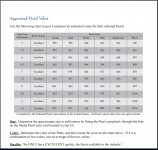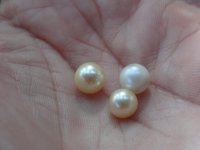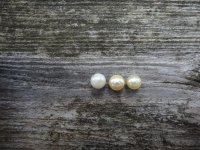Hi Lori,
The farms are not involved in the process. Baby shells are purchased from hatcheries and pearls are inserted at factories. The shells, especially the freshwater, are juveniles. They are too small to have grown a pearl. The akoya shells are a bit closer to farm-able size, but the factories are still inserting freshwater pearls into them.
The easiest way to tell are the colors. When you see a natural peach or lavender pearl harvested, it's a dead giveaway the pearl is freshwater. When you see a black pearl harvested, you know that is impossible in nature. The pearl has already been dyed.
Shape is the next telltale sign. The pearls are always very off round to very slightly off round. They aren't inserting loose-grade pearls into the shells. The pearls, even freshwater, would cost more than they are selling the wish pearl set for. Akoya pearls are, by and large, perfectly symmetrical due to the bead.
Of all the wholesale operations I've seen, even those that promise the shells have akoya pearls inside, all of them have been freshwater. I've not seen a single one with akoya pearls. I've spent some time speaking with the young lady who started the viral "Open an Oyster" on Facebook and her supplier swore up and down they were akoya pearls. I watched her show and the pearls were without question freshwater pearls.
The advice I gave her was to call the pearls cultured pearls. Freshwater pearls are cultured pearls. Her show creates a lot of excitement. The audience loves to watch. As long as the pearls pulled from the shells aren't referred to as "akoya pearls," she isn't breaking any laws.



